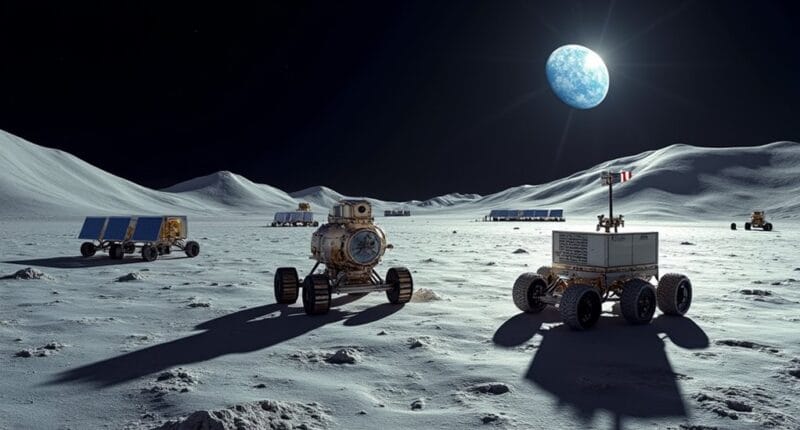The Moon isn’t just a pretty nightlight anymore – it’s about to become humanity’s economic launching pad. With €142 billion in projected lunar economy by 2040, private companies are racing to stake their claim. The Moon’s lower gravity makes launches cheaper, while its ice can be converted to rocket fuel. Add abundant Helium-3 for fusion reactors and autonomous mining robots, and Earth starts looking like the galactic backwater. There’s a whole new world of opportunity up there.

The next gold rush isn’t on Earth – it’s on the Moon. And this time, we’re not just talking about precious metals. The lunar surface is about to become the hottest real estate in the solar system, and for good reason. Think about it: launching stuff from the Moon is way cheaper than launching from Earth. Less gravity means less fuel. Simple physics, folks.
But here’s where it gets interesting. The Moon’s south pole isn’t just a pretty spot for postcards – it’s loaded with ice. That’s right, frozen water just sitting there, waiting to be turned into rocket fuel and life support for astronauts. And that’s just the beginning. The place is practically drowning in Helium-3, which could power future fusion reactors. Talk about a cosmic jackpot.
Private companies aren’t stupid. They’re already lining up to get a piece of the action. Through NASA’s Artemis program and various commercial partnerships, they’re planning everything from mining operations to tourist destinations. Yes, tourist destinations. Because apparently, some people think Earth’s beaches are getting boring. NASA’s Commercial Lunar Payload Services are already partnering with American companies to deliver scientific equipment to the Moon. Market analysts predict the lunar economy will reach €142 billion by 2040, making it a frontier ripe for investment. Like compound growth advantages, early investors in lunar ventures could see exponential returns on their investments.
The technology being developed for lunar missions is mind-blowing. We’re talking 3D printing with moon dust, autonomous robots that could probably beat you at chess, and vehicles designed to cruise around in lunar gravity. The best part? All these innovations are finding their way back to Earth applications. Space tech today, smartphone features tomorrow.
The international community is getting in on the action too. Multiple countries are pooling resources, sharing risks, and planning collaborative missions. By 2030, the Moon could look like an international business district – minus the overpriced coffee shops.
Everyone wants a piece of this celestial pie, and they’re willing to play nice to get it. The Moon isn’t just Earth’s sidekick anymore. It’s about to become the launch pad for humanity’s next great economic frontier. And unlike Earth’s resources, we’ve barely scratched the surface of what’s possible up there. Literally.




